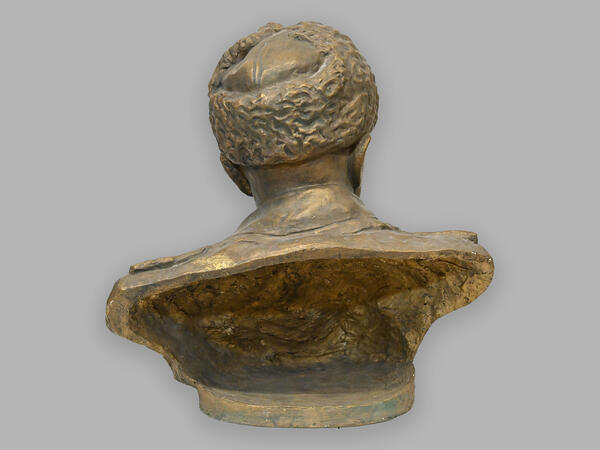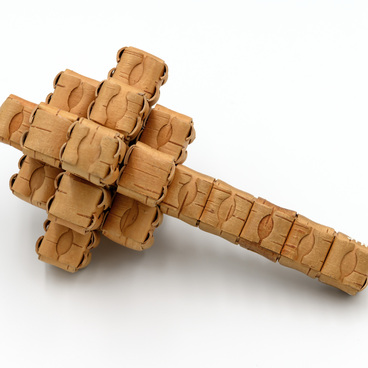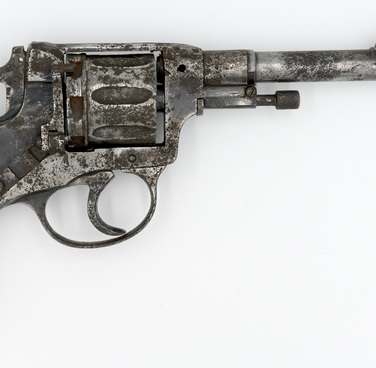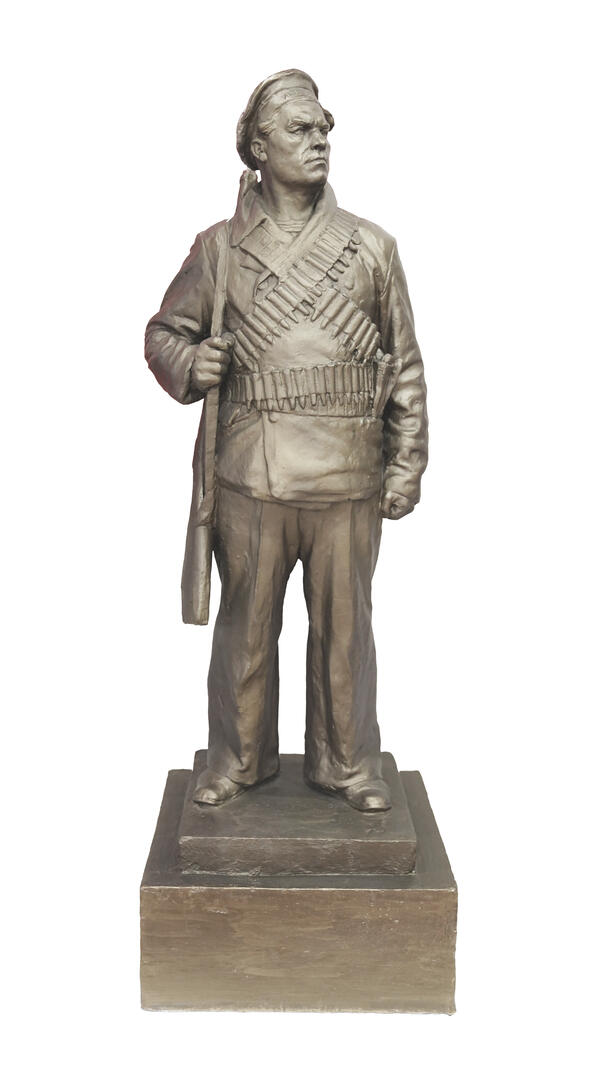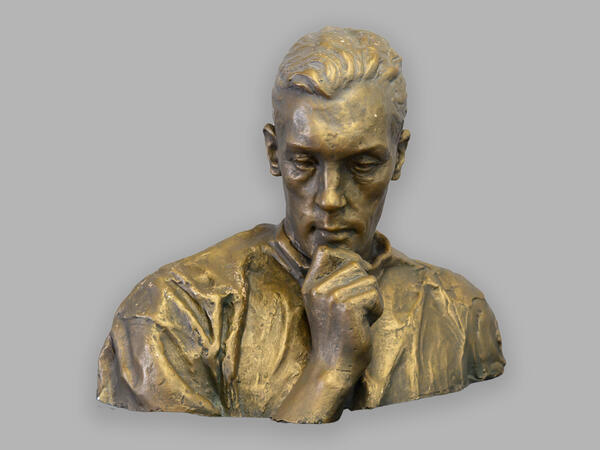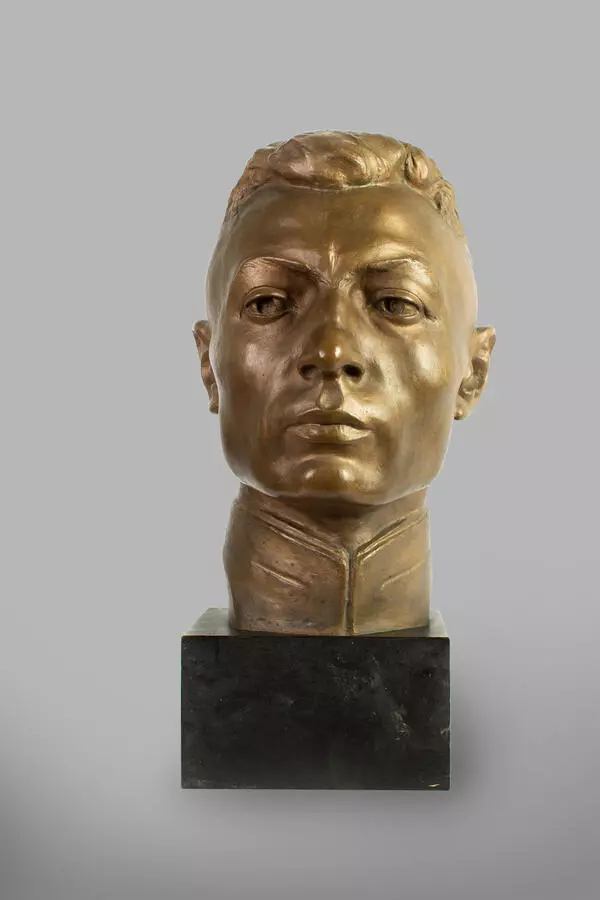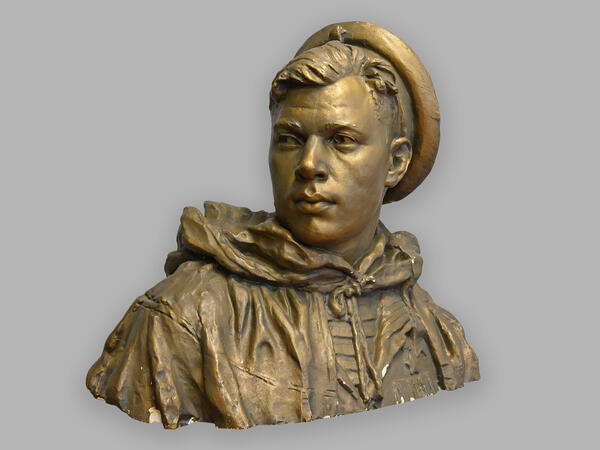A sculptural portrait of the Hero of the Soviet Union Ivan Alexandrovich Kolyshkin is presented in the exhibition of the Polyarny Museum of History and Local Lore. The sculpture was made in the 1970s in Moscow using a mold created by the sculptor Lev Yefimovich Kerbel in Polyarny in 1942–1944. In 1989, in the year of the 90th anniversary of the town of Polyarny, the sculpture was donated to the museum.
Ivan Kolyshkin was born to a peasant family on August 21, 1902 in the village of Krutets, Glebovskaya Volost. In the autumn of 1924, Kolyshkin was enlisted in the Baltic Fleet by a Komsomol direction. He served as a sailor, helmsman, foreman, then became the commander of the steering department of the Baltic Fleet.
In October 1930, Kolyshkin began serving on submarines and was the commander of a torpedo group. Kolyshkin proved himself an outstanding commander of submarines in the Far North. He was the first in the fleet to perform long-distance campaigns, including ones to the shores of the Novaya Zemlya archipelago. In 1939, he was appointed commander of the 3rd Division of the submarine brigade.
From the outbreak of the Great Patriotic War until January 1942, the division’s submarines under the command of Kolyshkin, Captain 2nd Class, sank eight enemy transports and patrol ships with a total displacement of 72.5 thousand tons. By the decree of the Presidium of the Supreme Soviet of the USSR from January 17, 1942, for the successful command of the entrusted division and for his courage and heroism, Ivan Kolyshkin was awarded the title of Hero of the Soviet Union with the Order of Lenin and a Gold Star medal.
From January 1943 until the end of the war, Kolyshkin was the commander of the submarine brigade of the Northern Fleet. He personally participated in the sinking of 16 enemy warships and transports. In March 1947, Ivan Kolyshkin became the head of the Personnel Department of the Naval Forces in the Main Directorate of Personnel of the Soviet Army. In 1950, Kolyshkin graduated from the Voroshilov Higher Military Academy. In September 1950, he was appointed head of the Nakhimov Higher Naval School in Sevastopol, and in September 1958 he became deputy head of the Department of State Acceptance of Ships of the USSR Navy.
